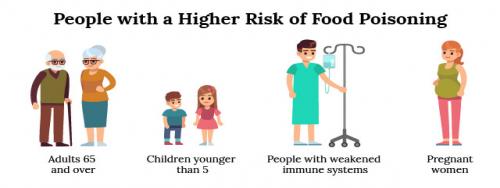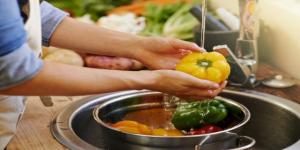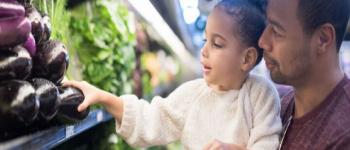-
Departments
-
- Departments Accounting Administration Aging and Disability Resource Center Arts & Culture Program Building Services Child Support Circuit Courts Clerk of Courts Coroner Corporation Counsel County Clerk Criminal Justice Coordinating Council
- Departments DNR Forester District Attorney's Office Emergency Management Environmental Health Extension Sauk County Health Care Center Health Highway Human Services Land Information/GIS Land Resources and Environment Management Information Systems
- Departments Parks and Recreation Personnel Register in Probate Register of Deeds Sheriff's Office Surveyor Treasurer Veterans Service Victim Witness County Directory Social Media Links
-
-
Government
-
- County Board Board Members Meeting & Agendas Video Recordings Committees County Departments County Directory County Ordinances County Social Media Links Building Locations West Square Building Historic Court House Courthouse Annex Law Enforcement Center Health Care Center Highway Shop Human Services (Reedsburg) Parks and Recreation
- Calendar Meetings and Agendas Upcoming Meetings Meeting Videos on Granicus Video Recordings Forms and Documents Forms, Permits, and Applications Documents, Reports, and Presentations Policies Legal Notices/Press Releases Press Releases Legal Notices Foreclosure List Sheriff Incident Reports Open Records Request Sheriff's Dept Records General Records Request
- Voting / Elections GAB Web - Polling Locations Register MY Vote WI Election Results Bids and Proposals Submitting Bids / Bid Process Current RFPs, RFBs, RFQs State Government State Agencies Hours of Operation Hours
-
-
Community
-
-
Community News
Business / Economic Development Place Plan Start Up Resources Business Financing Chambers of Commerce Registration of Firm Name Creating an LLC Permits Revolving Loan Fund (RLF)/CDBG Persons with Disabilities Apply for Benefits Disability Rights Wisconsin Disability Benefit Specialists Housing Transportation Caregiver Resources Employment Training - Residents Voting Dog License Elected Officials Parks Recycling Renters Libraries Marriage School Districts Severe Weather Shelters Road Conditions DMV Services Sheriff's Incident Reports Online Services List of Online Services GIS Tax Parcel iSite Property Tax Info (ALRS) Pay Clerk of Court Fees
- Homeowner/Property Property Tax Information Property Maps Zoning Information Permits Recycling School Districts Residential Vacation Check Form Foreclosure List Family and Health Nurse-Family Partnership Wis Immunization Program Women Infant Children Parks and Recreation Arts and Culture Libraries School Districts
- Seniors Retirement information Elderly Benefit Specialists Transportation Long Term Care Services Project Lifesaver Caregiver Resources Nutrition & Dining Centers Employment and Training Veterans Federal VA Services State Programs & Services Employment & Education Support Groups Health Care Home Loans Pension Benefits Transportation
-
Community News
-
-
Explore
-
-
ExploreSaukCounty.com
Parks Hemlock Park Lake Redstone Park Man Mound Park North End Boat Landing Sauk County Forest Summer Oaks Boat Landing Timme's Mill Weidman Woods White Mound Park Yellow Thunder Park -
Video Tour of Sauk County
Trails Great Sauk State Trail Hiking Horseback Skiing Snowmobiling Snowshoeing Outdoors & Nature Boat Landings Fishing Hunting Lakes, Rivers & Creeks Local Parks Natural Areas & Public Lands Nature Centers & Conservancies State Parks
Places to Eat & Drink Things to Do Places to Stay
-
ExploreSaukCounty.com
-
-
I Want To…
-
- Apply Marriage License Employment Passport Child Support Public Assistance Food Share Benefits BadgerCare Project Lifesaver Veteran's Benefits Dog License Permits Board of Adjustment Appeal/Zoning Appeal Arts & Culture Grants
- Request Obtain? Birth, Marriage, & Death Certificates Divorce Decree Court Transcripts White Mound Camping Reservation County Park Sticker Transportation Services Hunting Fishing Rec Permits Timber Cutting Permits Vehicle Registration Drinking Water Test Kits Soil Test Kits Pay Court Fees Traffic Tickets Property Taxes Child Support CPZ Fees
- File Divorce Will Deeds Property Liens Small Claims Guardianship Permits Claim for Service Related Disability (Veteran's) Appeal Zoning Ordinances Certified Survey Map Volunteer Aging & Disability UW Extension Parks Land Conservation Neighbor in Need
- Find Agendas and Minutes Property Tax Info Maps Foreclosures Sheriff's Incident Reports Warrant List Sex Offender Registry Zoning Info Voting/Election Info Sanitary/Septic Info Recycling Info Caregiver Relief/Assistance Genealogy Records Vote Register to Vote Polling Places
-
Food Safety
About 1 in every 6 Americans will come down with a foodborne disease in any given year, according to the Centers for Disease Control and Prevention.
There are an estimated 48 million cases of foodborne illnesses in the United States every year according to the CDC. Those cases result in more than 128,000 annual hospitalizations and 3,000 deaths.
Bacteria and viruses are the most common causes of food poisoning, which includes any illness or disease you may get from eating contaminated food. Food safety practices in the home address ways to stop or destroy these threats before you sit down at the table.
What Foods Are Most Likely To Cause Food Poisoning?
You can get food poisoning from any type of food. The CDC estimates that leafy vegetables cause more foodborne illnesses than any other type of food — about 22 percent of all cases. But poultry-related foodborne illnesses cause the most deaths — 19 percent. Dairy products rank second for both illnesses and deaths — about 14 and 10 percent respectively.
Foods Responsible for Most Foodborne Illnesses (%)
Produce 45.9
Dairy 13.8
Meat 12.2
Poultry 9.8
Seafood 6.1
Eggs 6
Grains and Beans 4.5
Undetermined 1.1
Oils and Sugars 0.7
Food Poisoning Symptoms
Food poisoning symptoms can vary depending on the type of foodborne disease. Most people who get a foodborne illness will recover without medical treatment. But people who experience serious symptoms need to seek help immediately.
Food Poisoning Symptoms
Diarrhea, including bloody diarrhea
Vomiting
Fever with sore throat
Jaundice
Food poisoning symptoms can show up in as little as 20 minutes for some germs or may take as long as 4 weeks for others.
People with Higher Risks of Food Poisoning
Certain people are at higher risk of food poisoning based on their age and medical conditions.
Foodborne illnesses can be more serious or even fatal for pregnant women, young children, older adults and people with compromised immune systems.

These people should only eat meat, poultry and seafood cooked to the minimum safe internal temperature. They should avoid raw sprouts that can carry harmful bacteria and pay special attention to safe food storage and preparation rules. People at higher risk should also reheat deli meats to kill Listeria.
The Four Food Safety Principles – Clean, Separate, Cook & Chill
There are four food safety practices to prevent foodborne illnesses or food poisoning: clean, separate, cook and chill. These four steps are part of Fight BAC!, a nonprofit consumer-oriented food safety campaign.
These four food safety steps work together to protect food from contamination and to destroy harmful contaminants.
Clean

Bacteria and viruses can spread through your kitchen and onto countertops, cutting boards and utensils. Anytime you touch any of these items, you risk getting them on your hands and moving them into your food. This is called cross-contamination.
It’s important to wash your hands with soap frequently when handling food. You should wash before handling food and utensils, after handling foods like raw chicken or meat and after touching any surface or used dish. You should also wash your hands after coughing, sneezing or touching your face, hair or clothing.
You should thoroughly rinse all fruits and vegetables. Rinse them under running water immediately before preparing them. Use a produce brush under running water to scrub firm produce such as cucumbers or carrots.
Wipe up spills as soon as they happen and frequently clean any surface that comes in contact with food. Clean both the inside and outside of appliances, paying special attention to knobs, handles and buttons where hand contact can allow cross-contamination.
Separate
Separating foods as you prepare them will prevent contamination that may be in raw foods from getting in food that is ready to eat.
This step begins in the grocery store. Put your raw meat, poultry and seafood in separate plastic bags while shopping to keep potential contaminants from reaching other food in your cart or bag.
When you get home, store raw meat, poultry and seafood below ready-to-eat food in your refrigerator. This can prevent leaks from cross-contaminating your food.
When preparing food, use a clean cutting board for produce and a different one for raw meat, poultry or seafood. And never put cooked food on the same cutting board or plate used for raw food.
Cook
Cooking kills harmful microbes in meat, poultry, seafood and eggs. Each should be cooked to its individual safe minimum temperature.
Looks can be deceiving, but a food thermometer will ensure that your food is properly cooked and safe from harmful germs. Always measure near the center and in the thickest part of the food. Remember to clean food thermometers after use with hot, soapy water followed by a thorough rinsing.
Recommended safe cooking temperatures
Poultry, stuffed meats, stuffed pasta - 165F
Ground beef, ground pork, eggs for hot holding, injected/tenderized meats - 155F
Fish, whole muscle steak and pork, eggs for immediate service - 145F
Chill
Foods are no longer safe to eat if they’ve been between 41 and 135 degrees for more than two hours. Keep refrigerated items below 41 degrees.
As soon as frozen foods get above 41 degrees, any bacteria in the food can start multiplying. You should thaw frozen foods inside the refrigerator, while in a pan to catch drips. Microwaves can safely thaw your food, too, as part of the cooking process. You can also thaw food by running it under a constant stream of cold water.

Personal Hygiene
Ensuring proper personal hygiene is essential to prevent foodborne illness. Handwashing is one of the most important things people can do to protect themselves and loved ones.
When Do I Need to Wash My Hands?
Before starting food preparation
After working with raw meat
After using the restroom, eating, drinking, or smoking
After touching face or if any other interruptions occur in the food preparation process
More is better!
